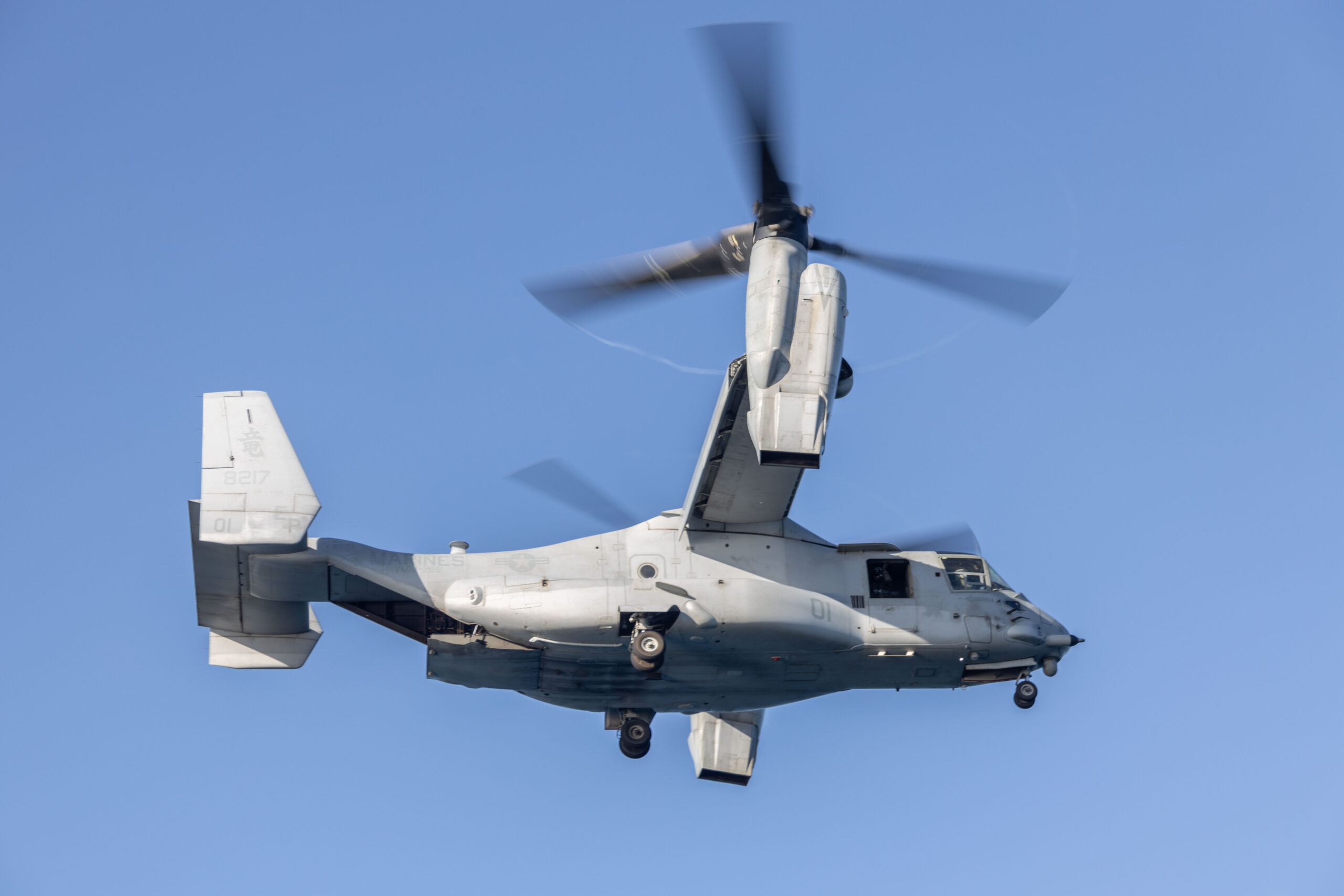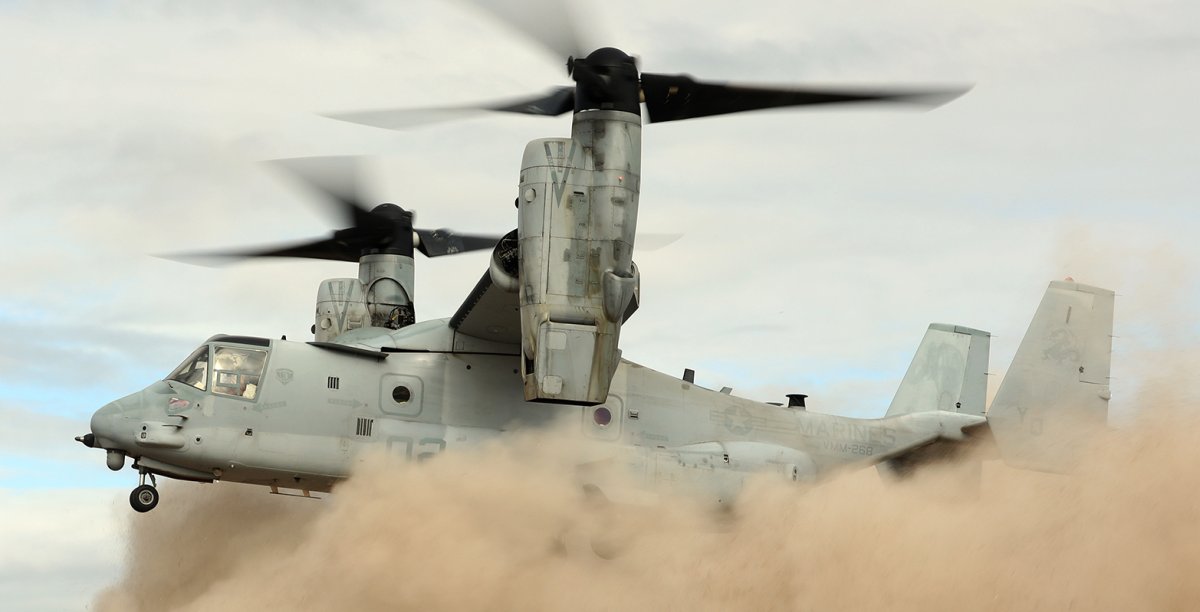John Fedup
The Bunker Group
It is such a strange decision they likely can’t believe it yet!This doesn’t seem to have been reported in USNI News, which seems a bit surprisin.
It is such a strange decision they likely can’t believe it yet!This doesn’t seem to have been reported in USNI News, which seems a bit surprisin.
I'm pretty sure it was reported on over a year ago when the USMC released the Commandant's guidance on the whole 2030 plan. This recent article is just an op-ed, and not actually reporting on any new informationThis doesn’t seem to have been reported in USNI News, which seems a bit surprisin.
The USN does not operate any of the systems mentioned. The MV-22s the USN are starting to field are I believe modified to extend their range to support the carrier supply mission, so the USMC's versions are not currently able to meet those requirements. The only CH-53s operated by the USN are the Sea Dragon mine warfare versions. While it would seem as a "no brainer" to snatch up some -53Ks to replace the older than dirt archaic maintenance whore Sea Dragons the -53K has not been certified to conduct those operations.Is
Is it likely that these assets will simply be taken over by the U.S.N ,as the ships the U.S.M.C operate from are U.S.N ships?, cant see the U.S.N giving up designated carriers like the Wasp amphib. class no matter how small, an earlier article discussing this reorientation did not get the publicity now present
The Marine Corps’ Shifting Focus: What to Know | Council on Foreign Relations (cfr.org)
USS Wasp: The Amphibious Assault Ship That Is Nearly An Aircraft Carrier? - 19FortyFive
It's likely that a few USN pilots have been trained to fly "B" models, in a test pilot capacity or possibly cross service posting, but nowhere near operational fielding numbers.WRT the F-35Bs, have USN aviators been trained on these jets? Marines have both F-35Bs and some F-35Cs. Surely divesting of "Cs" by the USMC would have been a less stupid option.
Navy Approves CH-53K Heavy-Lift Helicopter for Full-Rate Production - USNI NewsThe USN does not operate any of the systems mentioned. The MV-22s the USN are starting to field are I believe modified to extend their range to support the carrier supply mission, so the USMC's versions are not currently able to meet those requirements. The only CH-53s operated by the USN are the Sea Dragon mine warfare versions. While it would seem as a "no brainer" to snatch up some -53Ks to replace the older than dirt archaic maintenance whore Sea Dragons the -53K has not been certified to conduct those operations.
IMO the most logical future for all these divested assets would be retention in the bone yards potential replacements/part sources for future operational losses.
It's likely that a few USN pilots have been trained to fly "B" models, in a test pilot capacity or possibly cross service posting, but nowhere near operational fielding numbers.
And the USMC has a requirement to field fighter squadrons for USN carrier wing duties. Thus the "C" models.

I wonder how the V-280 addresses the hard clutch issue? Its rotor/engine setup is different as the engine does not rotate.|"The accident occurred when the right engine clutch, which connects the engine to the proprotor, disengaged and rapidly re-engaged, an occurrence called a hard clutch engagement. The strain from the HCE caused a shaft to shear in the tiltrotor's Single Engine and Interconnect Drive System (Single Engine/ICDS), which connects the two engines together such that one engine can power both proprotors. The Single Engine/ICDS failure resulted in a loss of thrust from the right proprotor, which sent the MV-22 into an unrecoverable turning descent, according to the accident report."|
Quite a severe weak point of the MV-22. Maybe one of the reasons Japan doesn't order more MV-22s besides the first 5.
US Marine Corps MV-22 crash traced to hard clutch engagement
A fatal 8 June 2022 US Marine Corps (USMC) MV-22 crash in Glamis, California, was traced to dual hard clutch engagement (HCE) in the right engine assembly, according to...www.janes.com
Military personnel rescued from Melville Island aircraft crash - ABC NewsA USMC V-22 Osprey has crashed in the Northern Territory with 20 people on board.
Few details so far. Hopefully no fatalities.



13 complete hull losses out of around 400 ever built. Most of those resulted in fatalities.The MV-22 is more advanced and has a higher price tag, but i have the feeling it is not as reliable, safe and combat proven as the CH-47.

Drie Amerikaanse mariniers omgekomen bij helikoptercrash in Australië
De mariniers waren op een gezamenlijke oefening met militairen uit Australië, Indonesië, de Filipijnen en Oost-Timor.nos.nl
It will be interesting to see if the next generation tilt rotor (V-280) can significantly improve the accident ratio.13 complete hull losses out of around 400 ever built. Most of those resulted in fatalities.
Not to mention many other non hull loss accidents.
That is, 1 in every 30 V-22s built has been involved in a major accident, SO FAR.
That seems ridiculously high to me.
Non-paywalled reporting of USMC crash and some ATC audio

UPDATED: 3 U.S. Marines Killed in Australian MV-22 Crash - USNI News
Three Marines were killed in a Sunday MV-22B Osprey crash off the coast of Darwin, Australia, according to the service. The tilt-rotor with 23 Maines aboard crashed around 11 a.m. local time on Melville Island while Marines were participating in Exercise Predators Run, according to a statement...news.usni.org

3 Marines killed, 20 survivors in Australia Osprey crash. [Audio] [Updated]
A US pilot circling overhead reported that he could see survivors. The Osprey was in a training exercise near Darwin.taskandpurpose.com

Perhaps LM should consider offering the CH-148 Cyclone assuming 53k cost is an issue and the extra lift the 53K offers isn’t required.Announced a few days ago, the USN has contracted for 35 CH-35K aircraft. I believe this is the first contracting of full-rate production (FRP) airframes. Deliveries expected to begin in 2026.
From this order the USMC will receive 27 helicopters. 12 from Lot 7, 15 from Lot 8.
This contract also provides for the Foreign Military Sale (FMS) of 8 aircraft to the Israeli Air Force.

US Navy awards Sikorsky $2.7 billion for 35 CH-53K helicopters
The contract covers 12 lot 7 and 15 lot 8 aircraft for the U.S. Marine Corps, as well as eight aircraft for the Israeli Air Force.www.defensenews.com
Back in April it was reported the US and Israel executed a joint USN & FMS contract for 169 T408 engines (129 / 40) with General Electric.
I keep waiting for some thread of interest in the USN to replace their aging fleet of MH-53E Sea Dragons with a -53K variant. It does not appear to be coming. The JMSDF has already replaced their versions of the Sea Dragon with AW101 airframes. I really don't think an entirely new orphan aircraft fleet is an option for the USN.
With HMX-1 set to operate the VH-92 as the replacement "Marine 1" I did think that would alleviate the "orphan fleet" status a bit. But, the USN has already determined that the 2-engine MH-60 had insufficient power to utilize the "light weight" mine sled developed as part of the LCS' mine warfare package. I suspect a S-92 variant would have a similar shortcoming.Perhaps LM should consider offering the CH-148 Cyclone assuming 53k cost is an issue and the extra lift the 53K offers isn’t required.
A lower mishap rate per 100,000 flight hours than the Harrier, Super Hornet, F-35B, or CH-53E Super Stallion is pretty good. Most of the fatalities occurred during testing as well. Don't forget, for most of those an accident will kill one or two, but as the V-22 is a transport, death tolls are likely to be higher.13 complete hull losses out of around 400 ever built. Most of those resulted in fatalities.
Not to mention many other non hull loss accidents.
That is, 1 in every 30 V-22s built has been involved in a major accident, SO FAR.
That seems ridiculously high to me.
